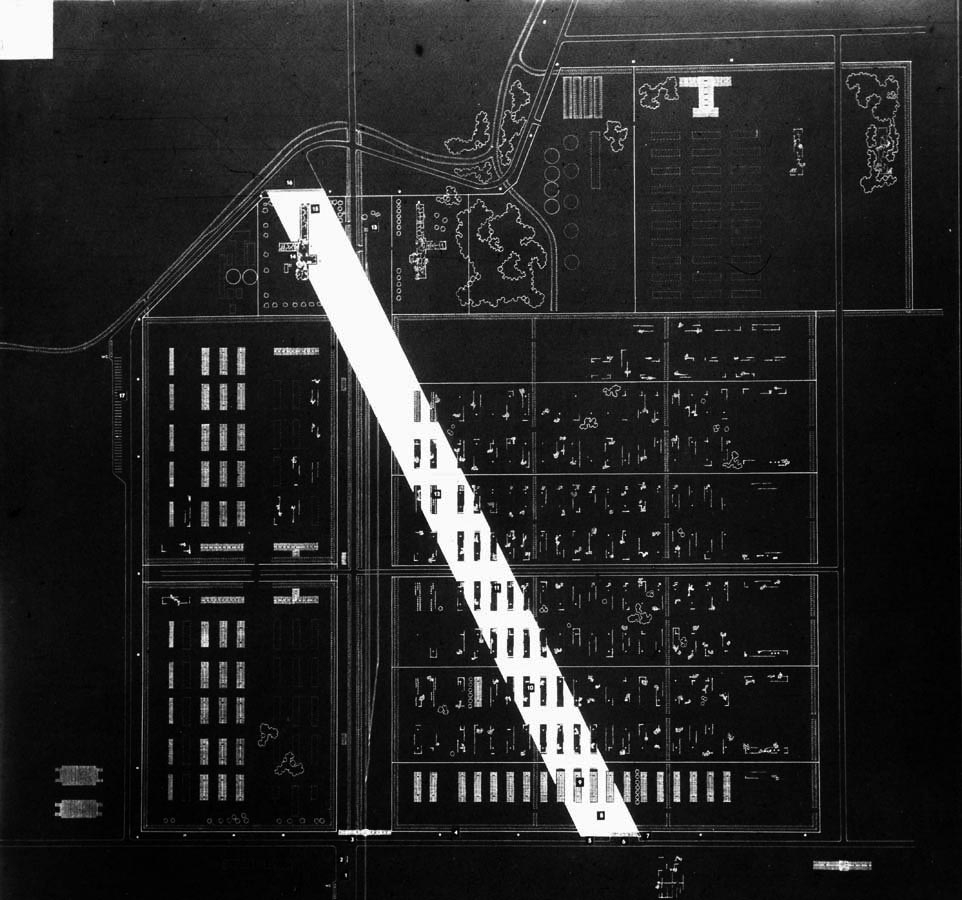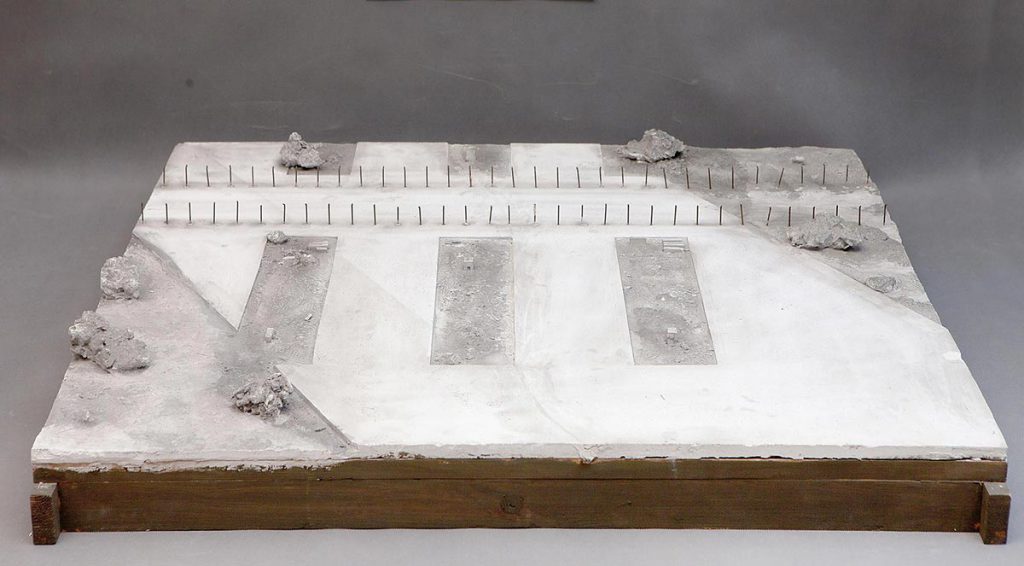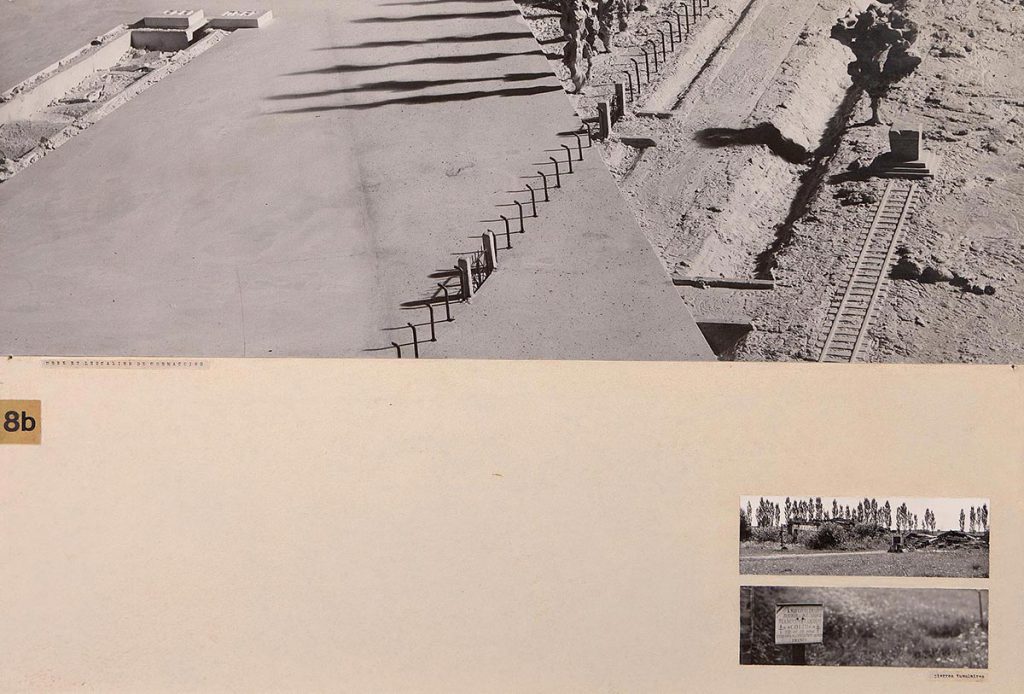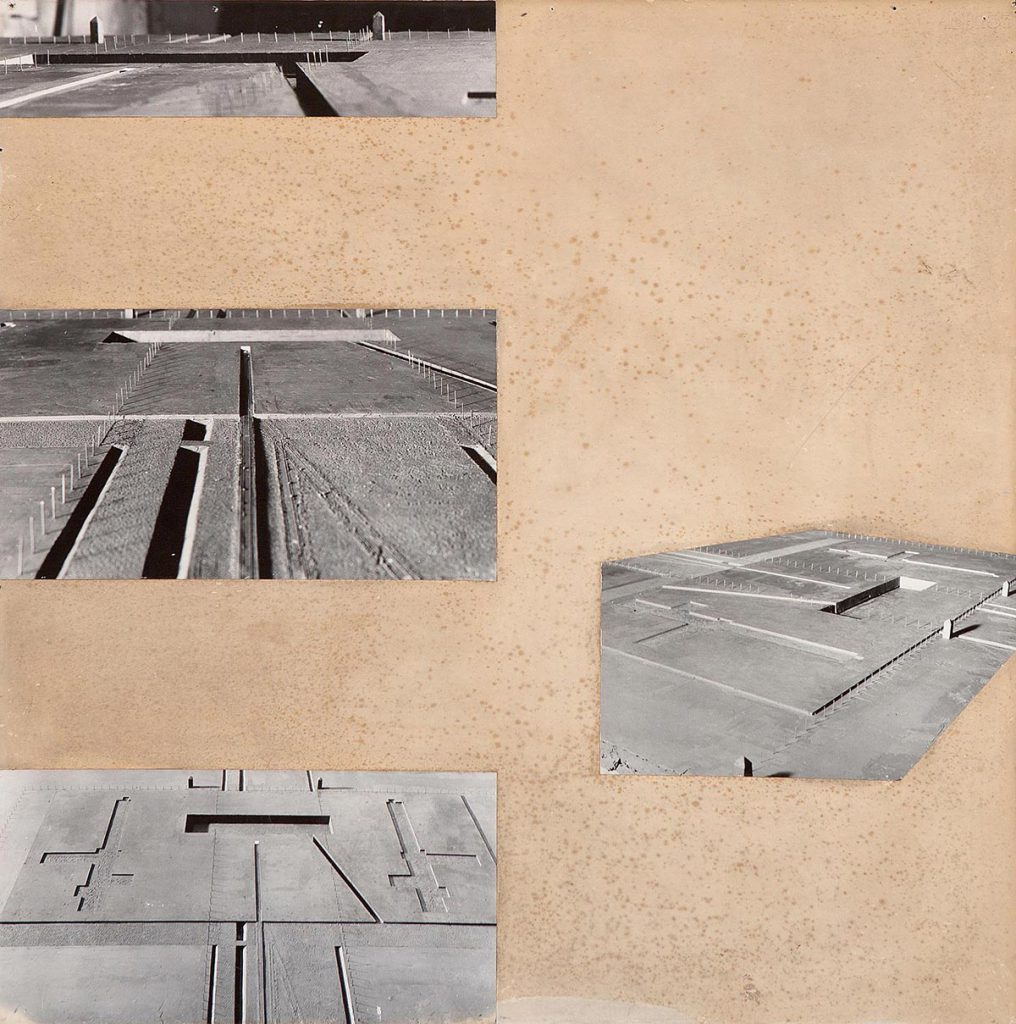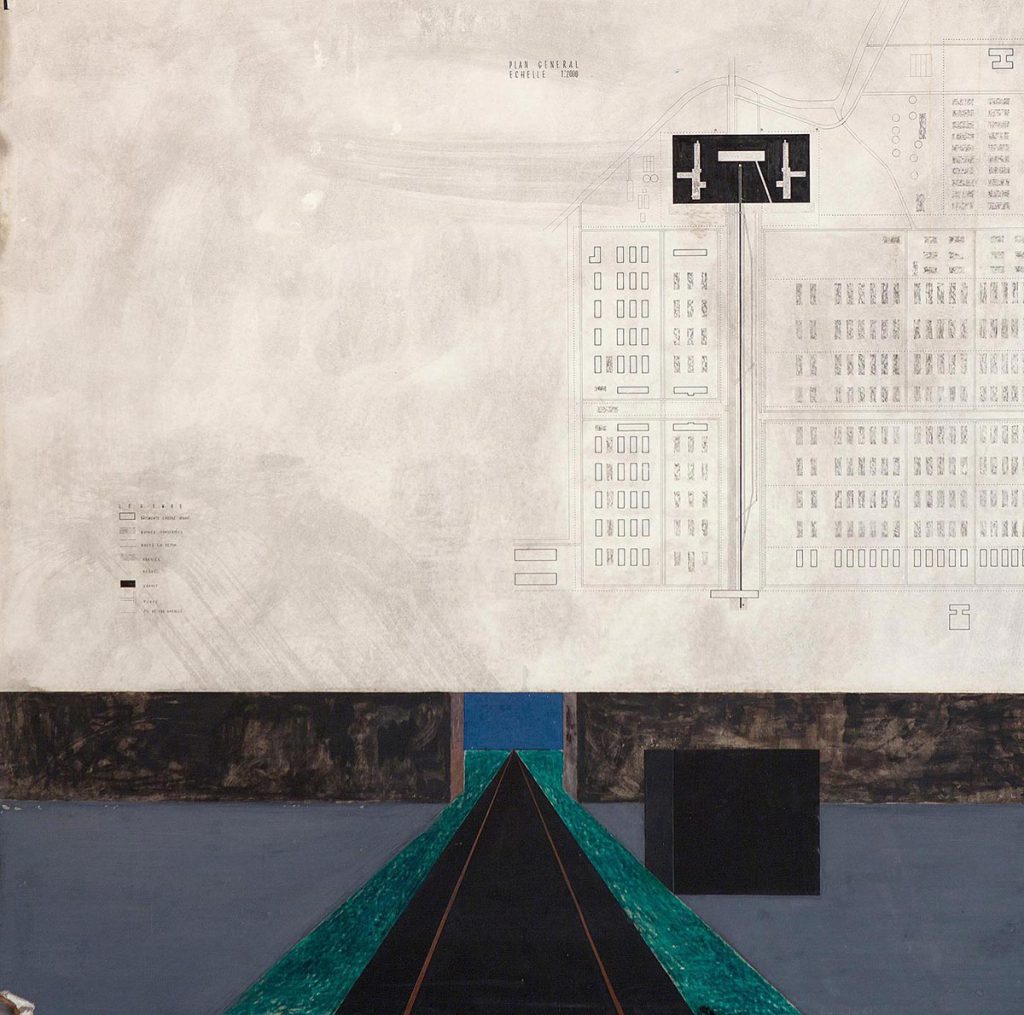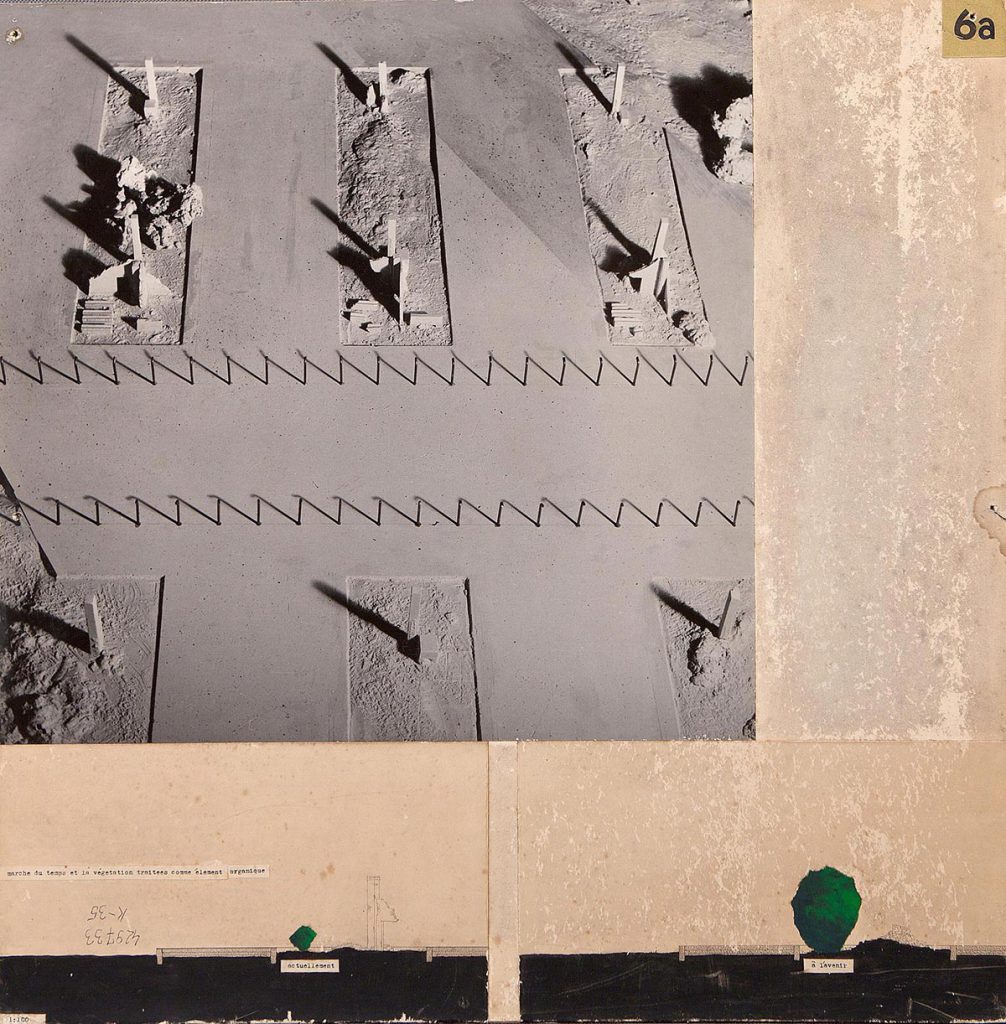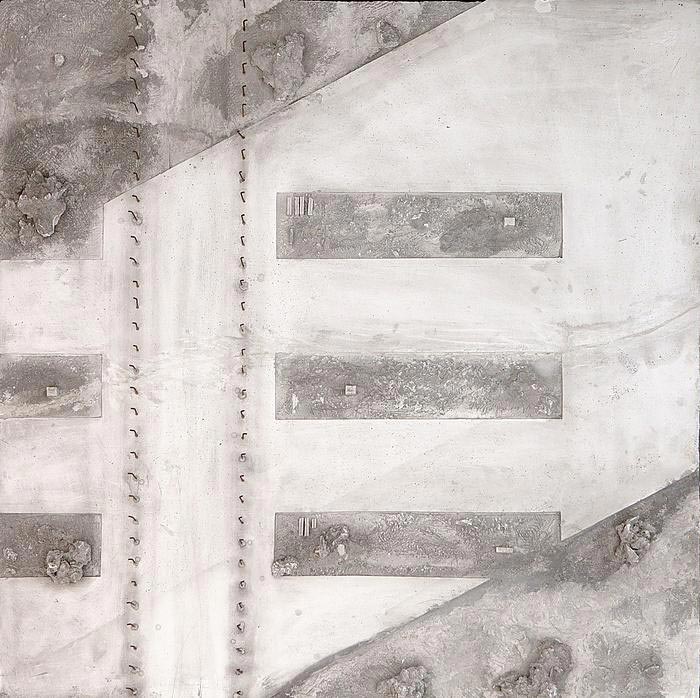“The process occurring off the road would play the role of a biological clock. Trees grew there; we saw roe deer and bucks passing through. We wanted to preserve the elements on the road, preserving this all-too-human experience for others, just like the lava preserved Pompeii. ‘The Road’ monument is a search for continuity. It starts with life, passes through death, and then returns to another life. Life and death define one other within it.”
“The process occurring off the road would play the role of a biological clock. Trees grew there; we saw roe deer and bucks passing through. We wanted to preserve the elements on the road, preserving this all-too-human experience for others, just like the lava preserved Pompeii. ‘The Road’ monument is a search for continuity. It starts with life, passes through death, and then returns to another life. Life and death define one other within it.”
Oskar Hansen
The Road memorial was created in 1957. The design team, led by Hansen, was made up of Zofia Hansen, Jerzy Jarnuszkiewicz, Edmund Kupiecki, Julian Pałka and Lechosław Rosiński. The radically innovative concept lay in negating the traditional notion of the monument, and instead treating the entire site of the former death camp as a monument in itself. Its central element was a black paved road about one kilometre long and 70 metres wide, cutting diagonally across the camp and petrifying everything in its path. All other remaining relics on both sides of the road – the barracks, the chimneys, the barbed wire fences, the railway ramp and the crematoriums – would be left to be consumed by the effects of time and entropy.
It was not a closed-form monument but rather an open-form structure, using space and time as its key elements. The project was favored by the competition jury, however, it ultimately failed to win the support of the community of Auschwitz survivors. A compromise was offered, combining The Road with an Italian proposal; but Hansen withdrew his entry, considering it impossible to combine it with the figurative, sculptural design of the Italians.
The Road memorial was created in 1957. The design team, led by Hansen, was made up of Zofia Hansen, Jerzy Jarnuszkiewicz, Edmund Kupiecki, Julian Pałka and Lechosław Rosiński. The radically innovative concept lay in negating the traditional notion of the monument, and instead treating the entire site of the former death camp as a monument in itself. Its central element was a black paved road about one kilometre long and 70 metres wide, cutting diagonally across the camp and petrifying everything in its path. All other remaining relics on both sides of the road – the barracks, the chimneys, the barbed wire fences, the railway ramp and the crematoriums – would be left to be consumed by the effects of time and entropy.
It was not a closed-form monument but rather an open-form structure, using space and time as its key elements. The project was favored by the competition jury, however, it ultimately failed to win the support of the community of Auschwitz survivors. A compromise was offered, combining The Road with an Italian proposal; but Hansen withdrew his entry, considering it impossible to combine it with the figurative, sculptural design of the Italians.
Every Image by César Delgado Martín
VIA:
